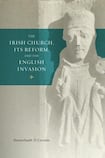
Years ago, while a first-year history undergraduate in UCC, I heard one of many memorable lectures by Prof Donnchadh Ó Corráin. Throughout that first term, he had encouraged, goaded, amused and inspired, introducing an early medieval Ireland to us students, one far removed from comforting mythologies. In that lecture, he presented the reform of the Irish Church, in the 11th and 12th centuries, not as a triumph of progress but as retrograde; he tied it to personalities, ambitions and Irish Sea politics. This was so different from textbook certainties that it caused us to question the interpretation of primary sources, leading us up those first steps towards historical understanding.
My experience was shared by many. Donnchadh Ó Corráin has long been one of the leading figures in early medieval Irish studies. His range is unparalleled, extending from the dawn of Irish history in the fourth century to the English invasion in the 12th. His ground-breaking research has transformed areas as diverse as early Irish law, genealogy, political propaganda and ecclesiastical culture. We can no longer think of early medieval Ireland as a pagan dreamtime, locked into an ancient culture, old as Babylonian starlight. In this book Ó Corráin brings to bear his ability to argue against the grain and to question our assumptions. As the reform of the Irish church became entangled with the Anglo-Norman or English invasion of Ireland and its aftermath, an event which has long had the status of a national Rubicon, this is a thought-provoking contribution.
Contexts
Ó Corráin presents the church reform in both its national and international contexts. He expertly examines the evidence for the reforming synods of Cashel (1101), Ráith Bresail (1111) and Kells (1152), all of which occurred under Irish leadership in response to the papally-led Gregorian Reform of ecclesiastical structures and mores as well as to other local issues. He goes beyond reconstructing their decrees to examining their motivations and impact, cultural, economic and political. For instance, the book spotlights the difficult question of sexual morality and its relationship to the articulation of Irish marriage custom. While Irish practice (easy dissolution of marriage and subsequent remarriage; acceptance of multiple partners) can be readily paralleled elsewhere, the difference was that customary law favoured them to an unusual extent in Ireland. This issue offered a wedge, assiduously exploited by Canterbury whose Norman-appointed archbishops, Lanfranc and Anselm, had ambitions to dominate the entire Irish Sea region. Furthermore, the undertow of the relationship between the Normans and the Papacy was always a factor that deeply complicated an already complex situation.
However, the core of this study is a provocative analysis of what “reform” meant. Ó Corráin asks us to put aside the easy assumption that it is necessarily positive. Instead, he suggests that it had hugely negative consequences, that it involved an asset-stripping of the long-established native monasteries in order to support a newly imposed diocesan system, one which in broad outline survives to this day. On the other hand, he shows that the older structures long-persisted, as they were deeply embedded in Irish society. There were limits to how far the Church could remodel society or, indeed, itself. He suggests, more controversially, that the Irish bishops were so enamoured of the reform agenda that they were willing to sacrifice anything and everything on its altar, including their own country. The book argues that they paved the way for the English invasion by gifting them the propaganda that the Irish were barbarians in need of guidance and good government. Ó Corráin suggests that Adrian IV’s Papal Bull, Laudabiliter, long the Casement Diaries of early Irish studies but now accepted as genuine, was directly grounded in the words of the Irish ecclesiastical reformers. It gave Henry II the green light for his Irish adventure, one which had consequences undreamt of at the time. Throughout, the rhetoric is passionate and engaged, engaging the reader to think and to question. The personalities of Cellach, archbishop of Armagh, his successor Malachy and Malachy’s champion, the great European churchman Bernard of Clairvaux, bestride the volume. For Ó Corráin, the Irish reformers were ultimately naive, self-righteous and dismissive of their own cultural formation.
Against the grain
It is, of course, inevitable, that a book written against the grain, will inspire disagreement in some matters of detail, although it should be emphasised how important it is that the questions were asked in the first place. For instance, one may wonder whether Irish ecclesiastical reformers were all followers of an English agenda or even thought in these terms. One may doubt that Irish churchmen actively sought an English invasion as the only means to bring about changes in sexual morality and the management of ecclesiastical property. Indeed, the study itself shows how successful the reformers were in those national synods of the 12th century. They did not need the Anglo-Normans: the likes of Cellach and Malachy saw off the threat of Canterbury’s ecclesiastical imperialism long before Henry’s arrival in 1172. Furthermore, it is important to remember that the Irish reformers were responding and contributing to an international movement. It seems unrealistic to expect that an unreformed Irish church could have flourished outside of the European mainstream. Ireland was deeply interconnected with its neighbours, as much then as it is now. Exiting those relationships would have been foolhardy and probably impossible.
Yet, this book provides much food for thought: it is learned, provocative and the fruit of one of the great scholars of early medieval Ireland. It has lessons to teach. For, history is invariably a story about winners, about losers. By turning his focus on the losers and not assuming the inevitability of the winners, Donnchadh Ó Corráin sets a deeper challenge – to look beyond winners and losers towards a complex world where events in Ireland, and among its neighbours, played out in ways at once logical and perverse, shaping our own “national” mythologies in the process.
Dr Elva Johnston, Associate Professor, School of History, UCD










